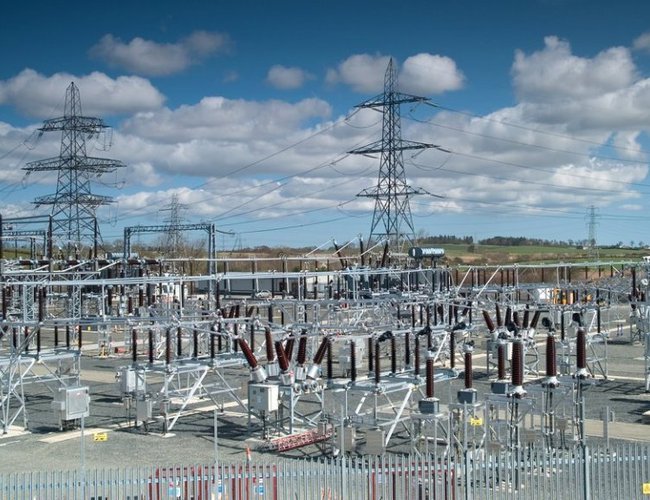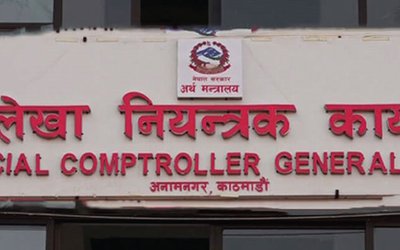
A higher level of electricity trade between Nepal and India has begun with the operations of the high-voltage Dhalkebar Substation in southern Nepal, as part of a World Bank project to promote exchanges of electricity between the two neighbors.
The Dhalkebar substation, the first 220 kV substation in Nepal and the first interconnection between Nepal and India operating at this voltage level, is the main hub to receive electricity from India and transmit it to load centers throughout the country. When excess electricity is available in Nepal’s power system, electricity generated from various hydropower plants will flow to this substation via the Hetauda–Dhalkebar–Inaruwa transmission line currently under construction.
“Increasing access to reliable electricity in a timely and cost-effective manner is one of the most significant development challenges facing Nepal today,” said Faris Hadad-Zervos, World Bank Country Manager for Nepal. “The operation of the transmission line signals a more robust domestic transmission, and opens up immense possibilities of cross-border trade and electricity interchange,” he added.
With the commissioning of the substation, Nepal has been able to upgrade its network capacity from 132 kV to the 220 kV voltage level. Works are ongoing to upgrade the Dhalkebar substation to 400 kV. The substation is part of the World Bank-supported Nepal-India Electricity Transmission and Trade Project, that aims to establish a high voltage cross-border transmission link between India and Nepal of about 1,000 MW to facilitate electricity trade between the two countries. It is expected to benefit electricity consumers in Nepal; Independent Power Producers; and, in the future, electricity consumers in India supplied with clean hydropower energy during the energy-surplus wet season in Nepal.
Nepal currently generates 1,074 MW of electricity, far less than its potential of an estimated 40,000 MW and the national requirement of 1,508 MW. Increasing demand results in peak shortages of about 450 MW. The substation will help import about 300 MW of electricity, covering most of the peak shortages in Nepal.
“As the first interconnection between Nepal and India operating at 220 kV voltage level, it will be a challenging task to ensure power system stability and synchronization with India’s electric power system,” said Rabin Shrestha, World Bank Task Team Leader for the Project. “However, the experience of operating this substation will enable the Nepal Electricity Authority to identify and rectify constraints in systems operation and gradually upgrade other concomitant substations to 220 kV as well,” he added.
The World Bank is also working with government agencies and Nepal Electricity Authority (NEA) to remove bottlenecks for timely completion of transmission lines.
According to a press release issued by the World Bank Group and Nepal, in Nepal, the World Bank Group (WBG) includes the International Development Association (IDA), the concessionary lending arm; the International Finance Corporation (IFC), the private sector arm; and the Multilateral Investment Guarantee Agency (MIGA), the investment risk insurance arm.
The World Bank currently supports 22 active investment projects in Nepal with US$ 2.5 billion dollars in commitments from IDA. The indicative resources available under IDA18 (FY2018-2020) are about US$ 1.39 billion, including US$ 300 million from the IDA Risk Mitigation Regime. IFC aims to commit about US$ 800 million to US$ 1.2 billion over the five-year period (FY19 to FY23). MIGA is actively seeking opportunities to support foreign private investment into Nepal. IFC and MIGA may make use of the IDA IFC/MIGA Private Sector Window (PSW) and the MIGA Guarantee Facility to underwrite eligible projects.
The World Bank Group (WBG) fielded its first economic mission to Nepal in 1963 to assess the country’s development prospects and challenges. It approved its first credit in 1969 for a telecommunications project. Since then, the World Bank has provided Nepal US$ 4.75 billion in assistance (US$ 3.48 billion in credits and US$ 1.27 billion in grants).
- Japanese Ambassador Kikuta And DPM Shrestha Shared The Views to Deepen Nepal-Japan Bilateral Relations
- Apr 19, 2024
- India Provides Financial Support To Build A School Building In Darchula
- Apr 19, 2024
- Shalom Club-Nepal Expresses Solidarity With Israel Against Iran-attack
- Apr 19, 2024
- Foreign Secretary Lamsal Urged Bangladeshi To Explore Investment Opportunities In Nepal
- Apr 19, 2024
- Nepal Should Get Compensation For Damaged Caused By Climate Change: Minister Pun
- Apr 19, 2024
















